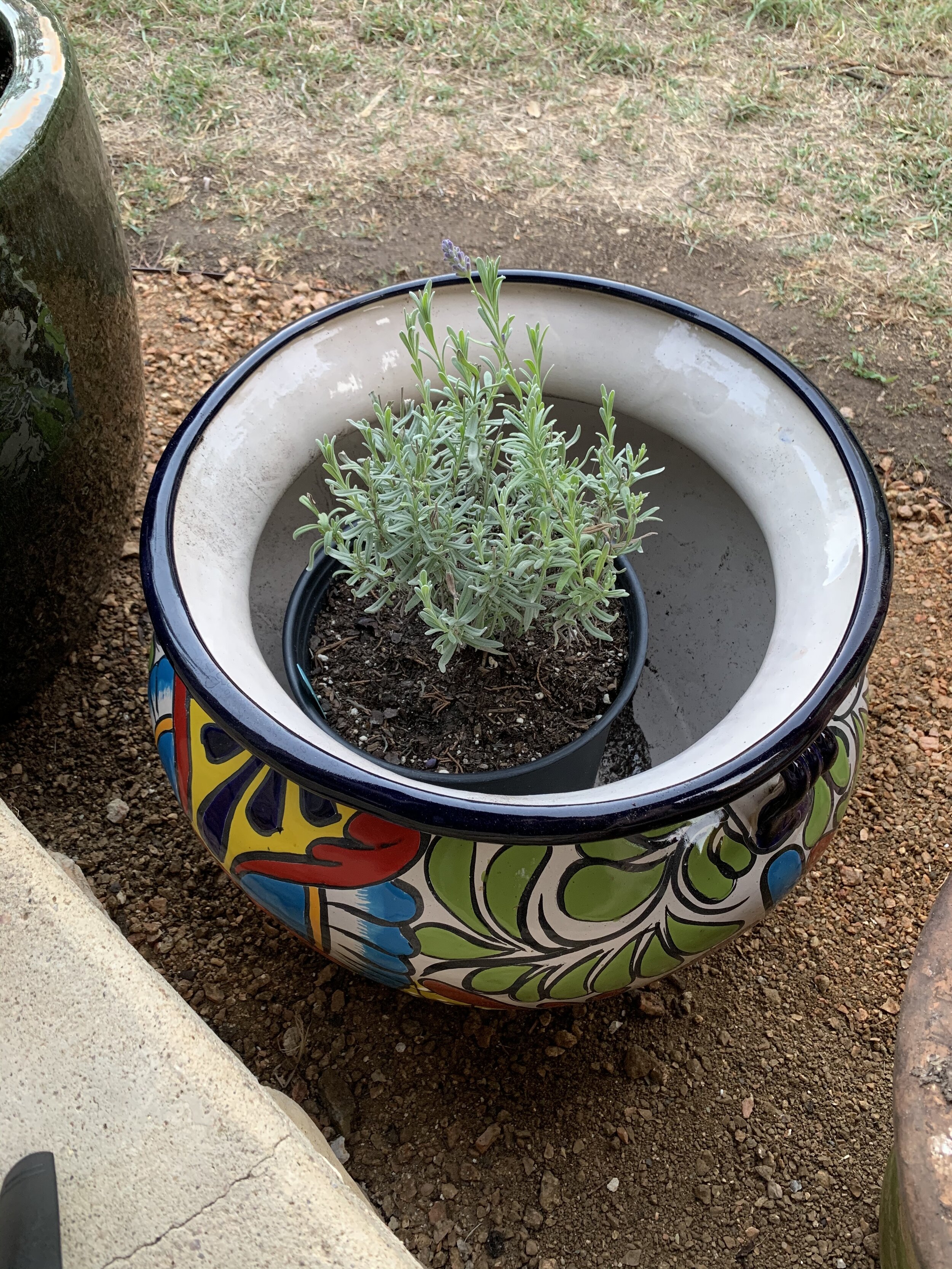growing your own lavender
Basic Information on Planting Lavender
The main variety of lavender grown at Hill Country Lavender is Lavandula Intermedia, also called Phenomenal and/or Sensational lavender. We have found that this variety and many other grow in the Hill Country.
Size of Provence Plant at 1 year.
Lavender in Your Yard
Starting Lavender: Plant shallow and water in thoroughly, top of potting soil should be level with the ground. Try several different varieties to see which is best for your area.
Soil: Soil should be well worked with a Ph of 6.4 - 8.3. Limestone soil works great.
Drainage: Needs excellent drainage (no wet feet), use raised beds or plant on a gentle slope.
Spacing / Circulation: Space plants 100% of the plants mature size apart (i.e., plant reaches 3 ft./ space 3 ft. apart), fully grown branches should barely touch. After winter, remove dead leaves from the base of plants to promote air movement.
Sun: Needs full sun, a minimum of 6+ hours a day. It can grow in up to 50% filtered light, but the bloom will be limited.
Water: Always water around the base of the plant (not through the leaves).Water regularly for the first year, especially during the summer heat (twice a week to every other day, depending on weather). Once established, you can reduce watering to once a month. Plant away from sprinkler systems that water regularly. No Wet Feet!
Humidity: Good air circulation and proper drainage increase your chances of success. Damp, still air makes the plant more susceptible to root rot and more.
Pruning Lavender: Pruning in late fall to early winter (October - January) promotes new growth and blooming the next season. Cut approximately 1 - 2 inches of green foliage/leaves off the plant to give it a domed/rounded shape. ** 1st season, prune off all blooms, the plant’s energy should be directed to growing roots, not flowers.**
Harvesting Lavender: In Texas, lavender normally blooms mid-May to early July. For a fresh bouquet, pick the blossoms when half of the flowers on the spike have opened. To dry the bundle for crafting or sachet, pick when three-quarters of the blossoms are open.
NOTE: If you are planting lavender in one spot of your yard and it continuously dies, the soil may have a fungus or hold to much water on the roots in that location and we recommend trying a different location with an new plant. If you have a fungus you do not want to move a plant as it will bring the fungus with it.
Pot Size: Needs a large pot with room for it to grow
Lavender in Containers
Container: Pots should be made of a breathable material (i.e., terra-cotta, pottery, wood. DO NOT PLANT IN PLASTIC), and may need to increase in size as the plant grows. The root ball is the approximate size or slightly larger than the visible plant.
Drainage: Adequate drainage in the container is important. Make sure that your pot has an hole or holes in the bottom. For higher humidity areas, you may need to place some rocks or an inch or two of gravel in the bottom for additional drainage.
Soil: Needs a light, “fluffy,” well aerated mixture, not too heavy, to allow for good drainage. We use a 50/50 mixture of potting soil and cactus or succulent soil.
Water: Like any plant in a container, you will need to pay more attention to watering them as they can quickly dry out. Remember, lavender does not like to be excessively wet or totally dehydrated. (We water every 3’ish days for our potted lavender, depending on mother nature.)
Fertilizer: Potted lavender can deplete soil nutrition more quickly than plants in the garden and needs to be fertilized several times a year. Time released pellets may also be used.
Pruning: Potted lavender also benefits from a light pruning every fall/winter. Take off 1-2 inches off the overall ball shape of the plan. ** 1st season, prune off all blooms, the plant’s energy should be directed to growing roots, not flowers.**
Location: For best results, containers should be placed where they receive a full day’s sun. If you cannot water them as often as needed, you may reduce sun to 6-8 hours a day.
*Information above is intended as a general guideline for growing lavender in Central Texas, actual success may vary, no guarantees are expressed or implied.
NOTE: If you are planting lavender in a pot and it continuously dies, the soil may have a fungus or the pot may be not draining properly. We recommend removing all the soil and cleaning the inside of the pot with bleach before putting in fresh soil. We also recommend placing some rocks in the bottom of the pot to help with drainage.
We discuss all aspects of lavender growing in an informational booklet we’ve put together. The cost is $35 a copy, and the packet includes information on different types of lavender, planting time and planting methods, water needs, fertilizers and how to be organic. We also cover harvesting, drying, pricing and marketing. For a copy of the booklet, click here.



